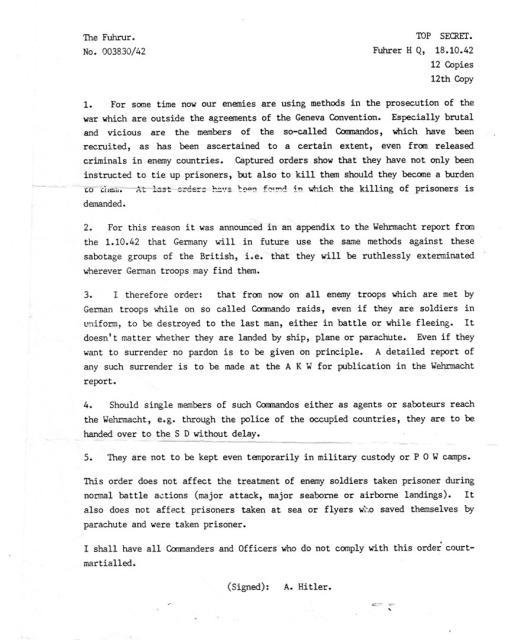Often overshadowed by the Heroes of Telemark – the Special Operations Executive’s (SOE) raid on the heavy water plant at Vermork – Operation Musketoon was an equally daring raid on a Norwegian industrial target that was vital to the Nazi war-machine.
On 11 September 1942, ten men from No.2 Commando, led by Captain Graeme Black, and two Norwegian corporals working for the SOE, embarked on the Free French submarine Junon destined for German occupied Norway.
The mission
Their mission, named Operation Musketoon, was to sabotage the power station at Glomfjord. The plant supplied electricity for Norway’s largest aluminium smelter at Haugvik. And produced five-thousand-tons of aluminium a year, but German demands were so great that the output had increased five fold.
Four days after leaving Scotland the Junon entered Bjerangfjord, where the commandos loaded their equipment into dinghies and paddled ashore. Hiding their craft among moss and rocks they completed a difficult three-day march over mountains and glaciers. Eventually sighting the power station on 18 September.
For three days they laid-up near the target, carefully probing forward to gather intelligence on the enemy, which they knew to be about at least 100 strong.
Move on to the target
On the night of 20 September, they split into two teams and made their move. Lance Sergeant Richard O’Brien’s team wrapped gelignite around two seven-foot diameter pipes that fed the plant from the mountain above. Setting the charges with a thirty-minute delay time pencil.
Meanwhile, Captain Black split up his team. Lookouts were deployed while Black and Fred Trigg covered the exit from a tunnel that ran from Glomfjord.
The remainder, under Captain Houghton, followed Sverre Granlund, a Norwegian corporals into the plant. Inside they found five huge generators and three turbines.
A quick search of the area found three Norwegian workers and a German sentry who was shot by Granlund. A second sentry, alerted by the shots, fled his post and ran down the tunnel towards the village. With the alarm raised they placed their explosive charges on the generators casings and set them for ten minutes’ delay.
The escape
Making their escape, the raiders were heading up the mountain to meet with O’Brien’s pipeline team, when tremendous explosions rocked the ground below them. From above they saw the building shudder and fire spreading through it.
The explosions had been the signal for O’Brien to snap his time pencils, and thirty-minutes later a thunderous roar echoed around the fjord. From high up on the mountain the pipes ruptured and millions of gallons of water, and tons of mud and rocks fell on the plant.
Operation Musketoon was a success, and although the plant wasn’t completely destroyed, it was put out of service for a number of months. Long enough for the Germans to decide to end their expansion programme.
However, the commando’s withdrawal didn’t go so well. The Norwegian corporal Erling Djupdraet was mortally wounded. Four men: O’Brien, Trigg, Fairclough and Granuland all escaped through Sweden and eventually made it back to Britain. The others however, weren’t so fortunate. Spotted by the Germans, low on ammunition, they soon found themselves surrounded, with no option but to surrender.
Hitler’s Commando Order
Taken to Colditz for interrogation they were then sent to Sachsenhausen Concentration Camp, near Berlin, where all seven men were executed by a bullet in the back of neck. Graeme Black, Joe Houghton, Miller Smith, Cyril Abram, Eric Curtis, Bill Chudley and Reg Makeham were the first victims of Hitler’s infamous Commando Order
Hitler’s Commando Order
For more blogs by Ian McHarg click here
For books by Ian McHarg click here




